News Courtesy: The Pioneer
Filmmaker, art historian and photographer Benoy K Behl studies how the ancient murals at the Ajanta Caves still have the potential to lend a new perspective to Indian art
India has one of the finest traditions of paintings in the world. This early tradition is not generally known, as many of these paintings are hidden in dark recesses in ancient temples and caves. These had not been clearly photographed or sufficiently represented to the world before as it was generally believed that we didn’t have such a tradition.
My photography of the early Indian murals has given a new perspective to the Indian tradition of paintings. The murals of India have also been established as one of the greatest and most sublime traditions of the art of the world. In 1930, Laurence Binyon, Director of the British Museum and a leading authority on Asian art, wrote, “In the art of Asia what a supreme and central position Ajanta owns! Whoever studies the art of China and Japan, at whatever time he begins, starts on a long road which will lead him ultimately to Ajanta.”
True colours of Ajanta
In 1991-92, I had the privilege of documenting the glorious paintings of Ajanta of the second century BCE and fifth and sixth centuries CE. Scholars and institutions around the world responded to state that this was the first time that they were able to see the true details and colours of the Ajanta paintings, which were considered to be the fountainhead of the classic traditions of painting in Asia.
Dark caves
The ancient caves are dark, strong lights were not allowed to be used inside as these would damage the paintings. Photography was normally not allowed in order to save the paintings from the adverse effects of flash lights. Some earlier photography of the paintings, which had been carried out with special permission, was not very accurate, as there was much surface reflection from the painted surfaces. I had fortunately developed a technique of photographing in extremely low light to document the wall and ceiling paintings of the Ajanta Caves in 1991-92. The then Director General of the Archaeological Survey of India M.C. Joshi wrote to me that I had “conquered the darkness of the Ajanta Caves.”
Worldwide response
Scores of the most prestigious universities and museums around the world invited me to speak on Ajanta and show the paintings. National Geographic Magazine were among the hundreds of journals and newspapers, who hailed my photography as path-breaking. In 2008, National Geographic Magazine published an 18-page story about Indian art as reveled to the world through my photographs. It was the cover story in some of the European editions of the magazine.
In the meantime, many noted international book publishers offered to publish my book on the Ajanta paintings. The first edition of the book came out in 1998, with an American Edition by Harry N Abrams.
There was a unanimous response of the leading art critics and historians at the great capital cities of the world, where I was invited by the art institutions. They felt that the Ajanta paintings “were surely the finest art of humankind”. Experts commented on the technical virtuosity found in these paintings. They saw qualities in them which appeared in Western art only in the High Renaissance, Impressionist, Expressionist and Modern periods.
Capture the shades
Numerous attempts of the reproduction of the Ajanta paintings with colour photography were made. In the earlier part of this century, photography was not developed enough to capture the colours of the paintings accurately. In recent years, the Archaeological Survey of India has not permitted the use of photographic lights as these would damage the 2200 to 1500-year old paintings. Strictly limited attempts to photograph some of the panels with lights were allowed, but these too failed to capture the colours accurately. Thus, the exquisite beauty of these paintings seemed to remain in the dark interiors of the remote caves.
Establishing a continuous tradition
Subsequently, in 1992, I went on to photograph the 10th century paintings in the dark and narrow corridors of the Brihadeshwara Temple at Thanjavur, Tamil Nadu. These had not been clearly photographed before and scholars around the world responded warmly when they saw my photographs. Dr. Milo C. Beach, Director of the two American National Galleries of Asian Art (in the Smithsonian Institution, Washington DC) said that he would have to revise his understanding of the history of Indian paintings. He explained that the paintings had been well-known, but since paintings before and after Ajanta for the next eight hundred years, were not known, it was not seen or studied as a part of a continuous tradition of art. However, since he was now seeing the art of the tenth century, which had the same technical virtuosity as the fifth century paintings, it pointed towards the fact that there was a continuity and a great tradition of art.
Ancient murals
I had a good fortune to photograph other Indian mural paintings of the fifth and the later centuries of the ancient and medieval periods, clearly establishing a continuous tradition. As the paintings are considerably damaged, the digital restoration has made it much easier for the people to appreciate this early art.
Early surviving paintings
Descriptions of the Badami paintings in the 1950s included paintings that were lost by the time I reached there to photograph in 2001. National Geographic Magazine, when they were doing a story about my work in 2008, could hardly see even those paintings which I had seen and photographed in 2001. Therefore, this photography and restoration is of fundamental importance for the Hindu tradition specifically as well as for overall tradition of the paintings of India.
Virtual museums
The government has a vision of the vast documentation and digital restoration of Indian art, as well as the making of virtual museums to take this art to the people. For this purpose, Government Advisory Company Sapio Analytics have been taking shared rights from me for some of my photographs, as well as Badami and other early Indian paintings. Sapio Analytics will be using these photographs and my digital restoration for the virtual museums. They will also be using my digital restoration for training purposes, to establish a base for future digital restoration.


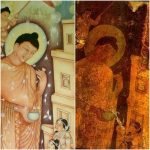

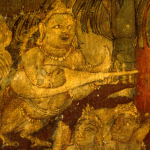
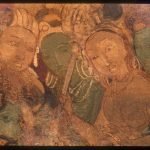






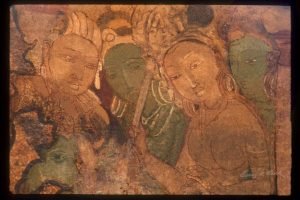

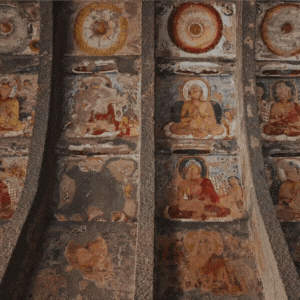

Add Comment